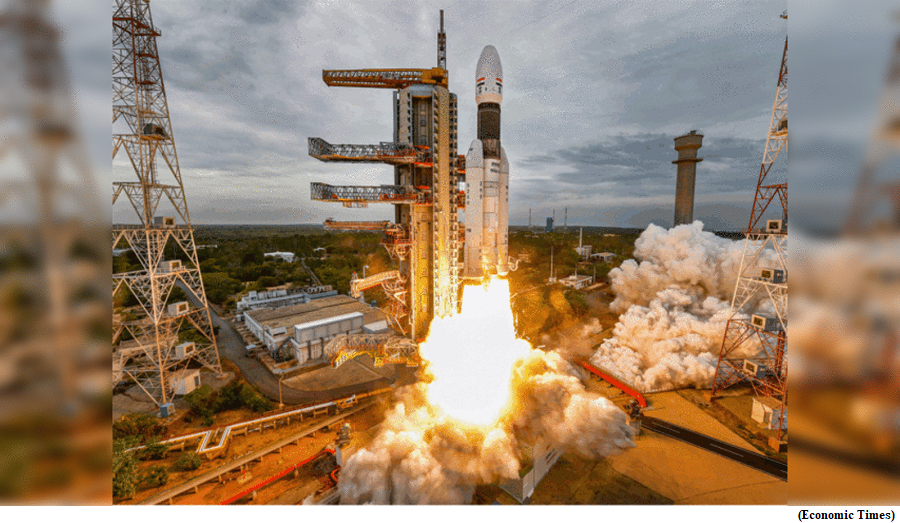INS Sandhayak, first Survey Vessel Large ship, commissioned (GS Paper 3, Defence)

Why in news?
- INS Sandhayak (Yard 3025), the first Survey Vessel Large (SVL) ship, was commissioned into the Indian Navy recently at the Naval Dockyard, Visakhapatnam.
Role:
- The primary role of the ship is to carry out full scale hydrographic surveys of ports, harbours, navigational channels/routes, coastal areas and deep seas, towards enabling safe marine navigation.
- In its secondary role, the ship will be capable of undertaking a range of naval operations.
SVL Project:
- The commissioning ceremony marked the formal induction of the first of the four ships of the SVL Project under construction at Garden Reach Shipbuilders & Engineers (GRSE), Kolkata. The project has been steered by the Warship Design Bureau of the Indian Navy.
- The keel was laid on March 12, 2019 and the ship was launched on December 05, 2021.
Salient features:
- The ship has a displacement of 3,400 tons and an overall length of 110 meters with a beam of 16m.
- INS Sandhayak is equipped with state-of-the-art hydrographic equipment including Deep & Shallow Water Multi-Beam Echo-Sounders, Autonomous Underwater Vehicle, Remotely Operated Vehicle, Side scan sonars, Data Acquisition and Processing System, satellite-based positioning systems and terrestrial survey equipment.
- The ship is propelled by two Diesel Engines and is capable of achieving speeds in excess of 18 knots.
- It has an indigenous content of over 80% by cost and is a tribute to the collaborative efforts between the Indian Navy and Industry, including MSMEs. Its induction underscores the growing maritime interests and capabilities of the nation.
Facts:
- ‘Sandhayak’ means the one who carries out a special search.
- The crest depicts the sixteen points of a mariner’s compass, enclosing a ‘divider’ and an ‘anchor’ riding the sea, symbolising the charting of oceans, which is the basic role of the survey ship.
India, Nepal sign MoUs for 3 Projects in education, health, culture sector
(GS Paper 2, International Relation)
Why in news?
- India and Nepal recently signed Memoranda of Understanding (MoUs) for undertaking three High Impact Community Development Projects (HICDPs) in Nepal, one each in education, health and culture sector at an estimated cost of NRs 122.52 million.

Key Highlights:
The three projects include the
- construction of school and hostel buildings for Shree Dang-Bang Secondary School in Airawati Rural Municipality in Pyuthan district;
- construction of Khamlalung Health Post Building, Aathrai Rural Municipality in Terhathum district and
- construction and infrastructure development works in Chandan Bharateshwor Mahadev Temple in Chandragiri Municipality in Kathmandu.
- These projects, which shall be implemented through local authorities of Airawati Rural Municipality, Aathrai Rural Municipality, and Chandragiri Municipality, respectively, will further enhance cultural linkages between the two countries.
Background:
- Since 2003, India has taken up over 550 HICDPs in Nepal and has completed 488 projects in the areas of health, education, drinking water, connectivity, sanitation, and creation of other public utilities across all seven provinces of Nepal at the grassroots level.
- The remaining 62 projects are ongoing and at various stages of implementation.
- The total cost of all the projects is around NPR 1220 crore (INR 762 crore).
Way Forward:
- As close neighbours, India and Nepal share wide-ranging and multi-sectoral cooperation.
- The implementation of HICDPs reflects the continued support of the Government of India in bolstering the efforts of the Government of Nepal in uplifting the lives of its people, augmenting infrastructure in the field of priority sectors including the education, health and culture sectors in Nepal.
China launches nine satellites into orbit on powerful Jielong-3 rocket
(GS Paper 3, Science and Technology)
Why in news?
- The Jielong-3, or Smart Dragon-3, blasted off from a floating barge off the coast of Yangjiang in southern Guangdong province.
- It was the third launch of the rocket, developed by China Rocket Co, a commercial offshoot of a state-owned launch vehicle manufacturer, since December 2022.

Commercialization of space sector:
- President of China has called for the expansion of strategic industries including the commercial space sector, deemed key to building constellations of satellites for communications, remote sensing and navigation.
- Recently, Chinese automaker Geely Holding Group (0175.HK), opens new tab launched 11 satellites to boost its capacity to provide more accurate navigation for autonomous vehicles.
- Critical to the construction of commercial satellite networks is China's ability to open more launch windows, expand rocket types to accommodate different payload sizes, lower launch costs, and increase the number of launch sites, such as building more spaceports and using sea launch vessels.
Jielong-3:
- Jielong-3 can carry a 1,500 kg (3,300 pounds) payload into a 500-km sun-synchronous orbit.
- The rocket could carry over 20 satellites at a launch cost of under $10,000 per kg - a globally competitive rate for small-lift rockets.
- The cost is similar to the launches of other Chinese small-lift rockets including the Long March 11, but their payload sizes are significantly smaller.
Lijian-1:
- Jielong-3 is comparable to the powerful Lijian-1, which first flew in 2022.
- Developed by CAS Space, a Guangzhou-headquartered commercial spinoff of the Chinese Academy of Sciences, Lijian-1 can also send a 1,500 kg payload to a 500-km sun-synchronous orbit.
Ceres-1:
- Other commercial companies in the Chinese vehicle launch sector includes Galactic Energy, whose Ceres-1 rocket made its debut flight in November 2020.
- Ceres-1 is capable of delivering a 300 kg payload to a 500 km sun-synchronous orbit.
- Beijing-based Galactic Energy made at least seven Ceres-1 launches in 2023, up from four in 2020-2022.
Zhuque-2:
- Landspace’s launch of the Zhuque-2 in 2023 marked the world's first successful payload delivery by a liquid oxygen-methane rocket and a breakthrough in China's use of low-cost liquid propellants.
Gravity-1:
- In the realm of larger rockets, Orienspace in January launched Gravity-1 from a ship off the coast of eastern Shandong province.
- The rocket is capable of sending a payload of up to 6,500 kg into low-earth orbit, making it the most powerful launch vehicle developed by a private Chinese enterprise.




